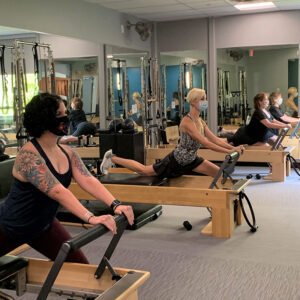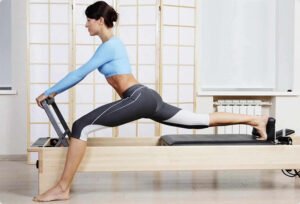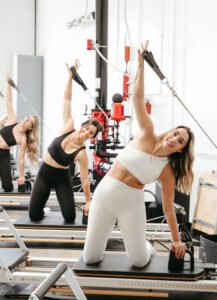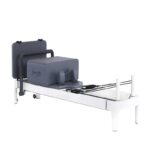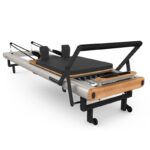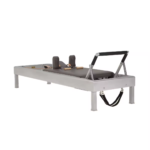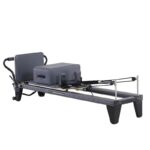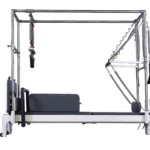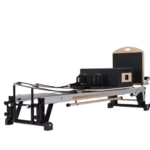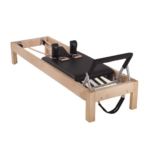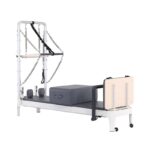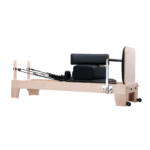As a whole-body fitness method, Pilates has attracted countless people who pursue a healthy lifestyle with its unique training methods. Among the many Pilates equipment, the Pilates Chair and Reformer are the two most popular. This article will explore whether the Pilates Chair is really effective, whether 20 minutes of Pilates a day is enough, and how to choose between the Pilates Chair and the Reformer. At the same time, we will also introduce the Pilates Chair used by famous actress Susan Lucci and provide key factors to consider when purchasing home Pilates equipment.

The Effect of Pilates Chair
The Pilates Chair is a small but powerful device that provides adjustable resistance through a spring system and supports a variety of seated and standing postures. This equipment is particularly suitable for strengthening the leg, hip and core muscles, while also improving balance and flexibility. For those who want to have an efficient and comprehensive exercise at home, the Pilates Chair is undoubtedly an excellent choice. Although it is relatively small in size, its diverse exercise options are enough to meet the needs of practitioners of different levels.

Is 20 minutes of Pilates a day enough?
There is no universal answer to the question of how long you should do Pilates each day to achieve the best results, as it depends on your individual goals and current physical condition. However, even spending as little as 20 minutes a day on Pilates can provide significant benefits. For example, such short sessions can help relieve stress, increase muscle strength, and improve overall fitness. Of course, if the goal is to lose weight or significantly change your body shape, a longer or more intense training program may be necessary. However, it is important to maintain consistency – even short periods of high-quality practice can gradually accumulate positive changes.

Chair or Reformer?
When faced with the choice between a Pilates chair and a Reformer, there are a few key points to consider:
Space constraints: A Pilates chair takes up much less space than a Reformer, so it may be a more practical choice for families with limited living space.
Training focus: While both can strengthen the core area, the Pilates chair focuses more on lower body and stability training; the Reformer is better for comprehensive body shaping and deep muscle activation.
Budget considerations: Typically, Pilates chairs are less expensive than Reformers, especially when you factor in the cost of extras like the Reformer double loop belt.
Personal preference: Some people may prefer the novelty of standing movements offered by a chair; others may prefer the smooth, continuous movement of lying on a sliding bed.
The final decision should be based on your specific needs and personal preferences. If you want a versatile solution that doesn’t take up a lot of space, a Pilates chair is a good choice; if you’re looking for a more traditional, all-encompassing Pilates experience, a Reformer may be a better fit.
Susan Lucci and her Pilates chair
Famous actress Susan Lucci is a long-time Pilates supporter. She often uses a professional-grade Pilates chair called Peak Pilates MVe® Chair for her daily exercise routine. The equipment is known for its durable design, easy-to-adjust features, and wide range of uses. By regularly using this tool for training, Lucci not only maintains good physical condition, but also demonstrates the effectiveness of Pilates chairs in improving overall health and wellness.

Building the Perfect Home Pilates Studio
To ensure you can enjoy a professional-level fitness experience at home, please refer to the following tips for choosing the right Pilates equipment:
Pilates Folding Mat: A portable and comfortable folding mat is one of the basic equipment for any beginner. It is not only suitable for floor exercises, but also can be used as a supplementary mat on other equipment.
Pilates Fitness Equipment: In addition to the main large equipment, you can also consider adding some small auxiliary tools, such as Pilates circles, balls or other small props to increase the variety of training.
Pilates Reformer Accessories: Including but not limited to double-loop belts, foot pedals and other replaceable parts. These details often greatly enrich your practice content and help better target specific parts.
Pilates Reformer Protective Cover: To extend the life of the reformer and keep it clean and hygienic, you can consider purchasing a special protective cover for your reformer. There are many styles available on the market that are both practical and beautiful.

Conclusion
Whether you choose a Pilates chair or reformer, or just spend 20 minutes a day practicing, the most important thing is to find the method that suits you best and stick with it. As Susan Lucci shows, with the right use of professional Pilates equipment, everyone has the opportunity to achieve their fitness goals. In addition, when building a home gym, be sure to consider factors such as space, budget, and personal interests to ensure that every piece of Pilates studio equipment you purchase can truly play its due value. Remember, you can only get the most out of it if you truly enjoy the whole process!

